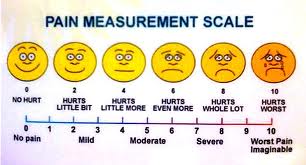On days like yesterday, when the roads are a mess of icy-slush, there is always that car that just seems to be inching along. Annoying, right? That person should have just stayed home. Well… I hate to admit it but that’s me hunched over the steering wheel, staring wide-eyed at the road. Okay, maybe I’m not quite that bad. But I can’t help it – driving in lousy weather terrifies me. I promise you, when I can, I avoid it. But I’m a diligent employee and live closer than almost anyone else to the store. It feels wrong to call out because I’m afraid to get behind the wheel.
Every winter I am determined to be brave. After all, other people drive in the snow and don’t seem traumatized. But my hands cramp from squeezing the steering wheel. I need to remind myself to breathe, I shrug my shoulders to release the tension that threatens to paralyze me. Plotting my route carefully – I go for the roads most likely to be clear – although I stay off the highway – the less speed the better for me and I certainly don’t want the additional terror of 16 wheeler trucks barreling alongside me. Usually I head for the Post Road – although equally frightening can be those crazy-huge SUVs with names like “ENVOY” disdainfully spraying me with slush as they speed by.
Honestly, I’m really a little embarrassed by this crazy fear of mine. Even more so because I drive a Subaru Forester with excellent tires. I mean, you can’t get much better than that for great snow driving. It’s me. I lack physical confidence and weirdly, I feel like even my car knows it, as if it were a horse. As a 12 year old, I tried horseback riding. After a summer of lessons, I finally admitted that I didn’t believe the massive creature I sat upon would ever think I was in charge. I certainly didn’t think so.
In other ways, I am not a coward. I’ll travel the world by myself without a thought. I willingly went to live in a war zone – and was not fearful. Public speaking feels completely natural for me – something many of my bravest friends are terrified of. But physically, I am a complete chicken. I don’t like adrenaline rushes brought on by physical thrills. I’ve never ridden a roller coaster and never intend to, in fact, amusement parks are a waste for me – I’m not going to willingly get jerked and tossed around. I got as far as the swimming pool part of scuba diving training and bagged it. The last time (and I mean, the last time) I took a ski lift ride I kept my eyes closed the entire time.
I think my dread relates to control — of my lack of it. That terrifies me. During those last years with my husband as he slid faster and faster down the steep slope of addiction, I felt like I was spinning across an icy highway full of traffic. Through the chaos, I tried to hang on, sliding along on the scariest, slipperiest slopes, flailing about for stability. There wasn’t a damn thing I could do. I kept trying. Until I didn’t. And then he died.
Maybe I’m reading too much into this. But a decade later, it’s only on those messy roads full of fearless, or maybe reckless drivers, that I get that same sick-to-my-stomach feeling. It’s a familiar horror as the steering wheel becomes useless in my hands as I slip on an icy road — even if only in my imagination.
What am I afraid of? Crashing the car? Injury? Death – either mine or someone else’s? Yes. I am afraid of all of those things. I should stay home.















